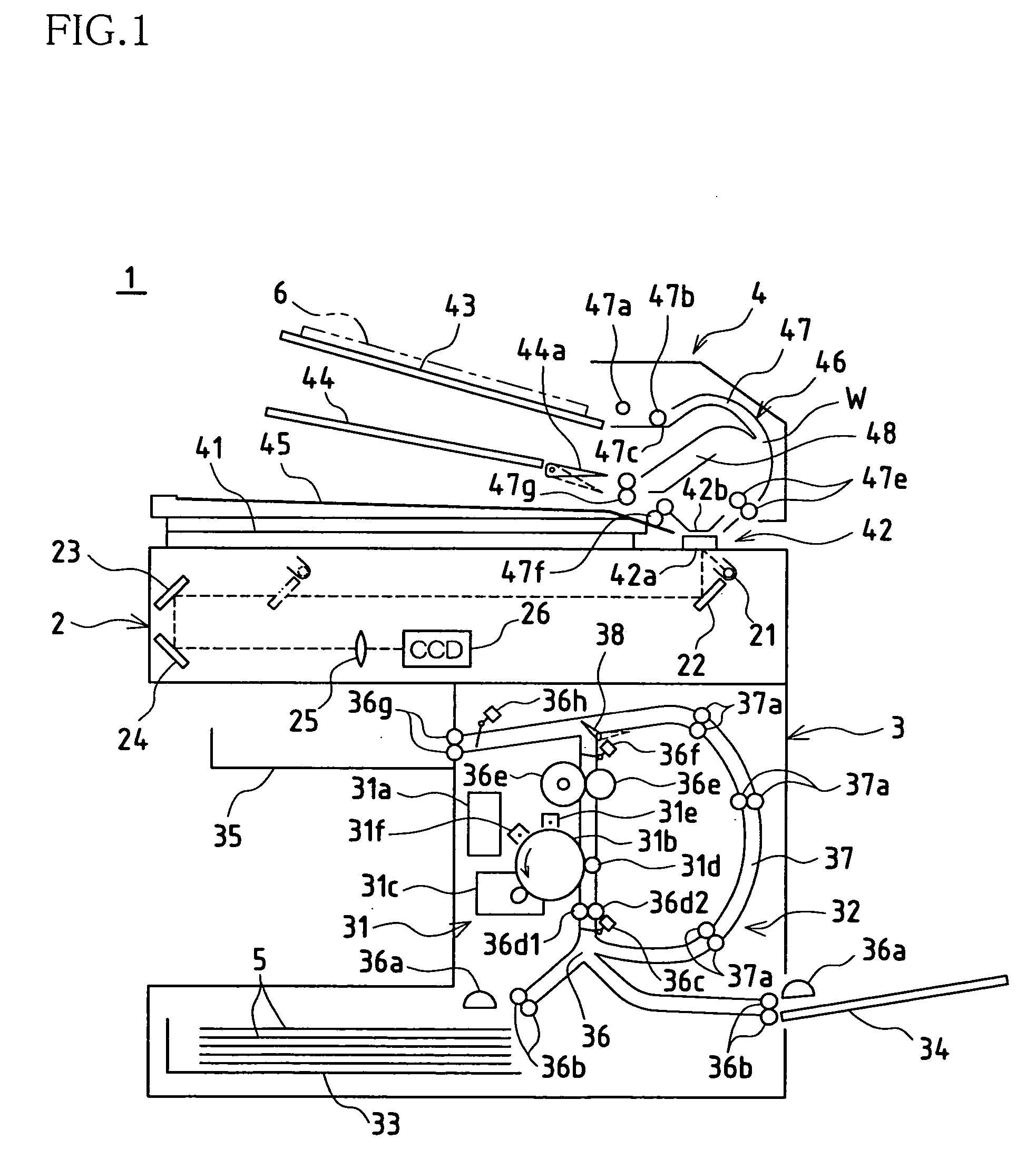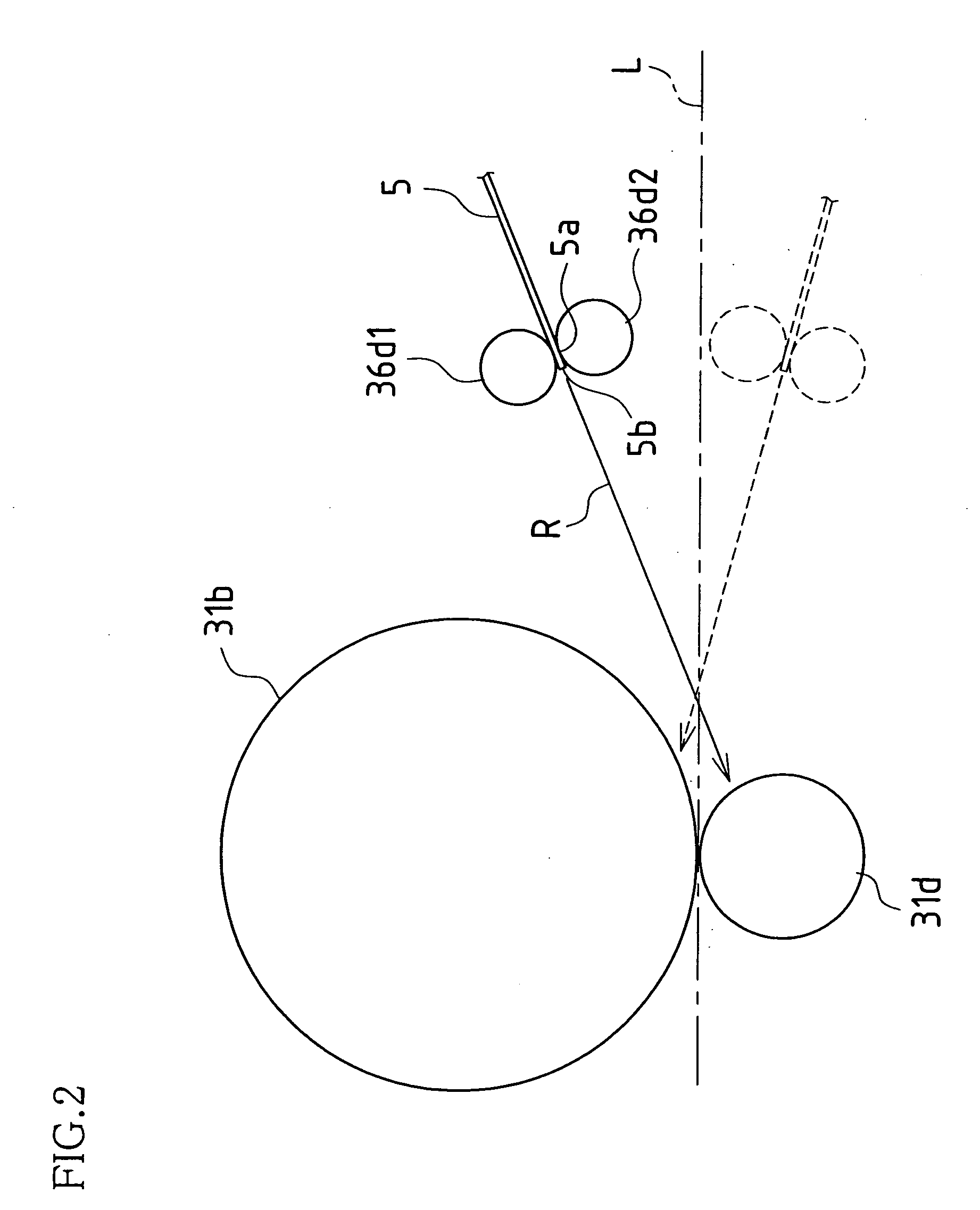Paper transport apparatus and paper transport method
a technology of paper transport and paper transport, which is applied in the field of paper transport, can solve the problems of reducing the transfer efficiency or efficiency of the transfer operation, reducing the print quality,
- Summary
- Abstract
- Description
- Claims
- Application Information
AI Technical Summary
Benefits of technology
Problems solved by technology
Method used
Image
Examples
Embodiment Construction
[0033] Below, embodiments of the present invention are described with reference to the drawings. Description of the present embodiment is carried out in terms of a situation in which a paper feed apparatus associated with the present invention is installed in a digital copier.
DESCRIPTION OF OVERALL CONSTITUTION OF COPIER
[0034] FIG. 1 shows in schematic fashion the internal constitution of copier 1 associated with the present embodiment. The present copier 1 is provided with scanning unit 2, printing unit 3 serving as image forming unit, and automatic original feed unit 4. Description of the respective units follows below.
[0035] Description of Scanning Unit 2
[0036] At the subassembly represented by scanning unit 2, images of originals placed on original stage 41 comprising transparent glass or the like and / or images of originals fed one at a time from automatic original feed unit 4 are captured and image data is created. This scanning unit 2 is provided with exposing light source 21;...
PUM
 Login to View More
Login to View More Abstract
Description
Claims
Application Information
 Login to View More
Login to View More - R&D
- Intellectual Property
- Life Sciences
- Materials
- Tech Scout
- Unparalleled Data Quality
- Higher Quality Content
- 60% Fewer Hallucinations
Browse by: Latest US Patents, China's latest patents, Technical Efficacy Thesaurus, Application Domain, Technology Topic, Popular Technical Reports.
© 2025 PatSnap. All rights reserved.Legal|Privacy policy|Modern Slavery Act Transparency Statement|Sitemap|About US| Contact US: help@patsnap.com



